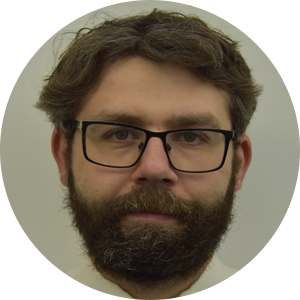GIA Research
GIA is proud to provide the most comprehensive research in the industry with a world-renowned field gemology team and a dedication to acquiring colored stones directly from the source.
Our cutting-edge research lays a strong scientific foundation to set the standard for diamond and gemstone reports. It also allows GIA to develop innovative instruments and educate future gemologists and industry leaders. Most importantly, our research helps us protect consumers across the globe. Learn more aboutwhat we do.
Apply to GIA’s Liddicoat Postdoctoral Research Fellowship Program
Research Content
Diamond Research
Get details on the latest research from the GIA research team, including: natural diamond geology and mining locations, causes of colors and optical features, laboratory-grown diamond research, various cut and color research that inform our diamond grading reports, and advanced instrumentation used.
Diamond Research
Get details on the latest research from the GIA research team, including: natural diamond geology and mining locations, causes of colors and optical features, laboratory-grown diamond research, various cut and color research that inform our diamond grading reports, and advanced instrumentation used.
Colored Stone Research
Get details on the latest colored stone research from the GIA research team, including: sources and their legend, lore, and traceability; photomicrography; treatments and identification; and the gemology of gemstone formation.
Colored Stone Research
Get details on the latest colored stone research from the GIA research team, including: sources and their legend, lore, and traceability; photomicrography; treatments and identification; and the gemology of gemstone formation.
Pearl Research
Get details on the latest pearl research from the GIA research team, including: identification of natural and cultured pearls, color treatments and processes, advanced and unconventional pearl testing techniques, and structural analysis and biomineralization.
Pearl Research
Get details on the latest pearl research from the GIA research team, including: identification of natural and cultured pearls, color treatments and processes, advanced and unconventional pearl testing techniques, and structural analysis and biomineralization.

Publications
From the history of the Chivor emerald mine to the ancient craft of jade carving to insight into the causes of corundum color, these articles combine science with art and history to provide insight into the fascinating and complex world of gemstones. Offering up the best and most current research by GIA lab scientists, all were published in GIA’s peer-reviewed academic journal,Gems & Gemology, or other professional journals. View theResearch Publication Archive.
Explore GIA Publications

Read about the some of the world’s most valued gems and the identification of unusual gem treatments and rare gem materials.
Read MorePublications
From the history of the Chivor emerald mine to the ancient craft of jade carving to insight into the causes of corundum color, these articles combine science with art and history to provide insight into the fascinating and complex world of gemstones. Offering up the best and most current research by GIA lab scientists, all were published in GIA’s peer-reviewed academic journal,Gems & Gemology, or other professional journals. View theResearch Publication Archive.
Explore GIA Publications

Read about the some of the world’s most valued gems and the identification of unusual gem treatments and rare gem materials.
Read More
Field Gemology
GIA field gemologists are globetrotters, traveling to all corners of the world to study new gem sources, such as Colombian emerald or Mozambican ruby. In the past decade, they’ve been on 95 expeditions to 21 countries, collecting more than 1 million carats of samples. Collecting gems from known geographic localities is of tremendous importance to the GIA research program. By collecting samples in the field, we have a much better understanding of where they come from, and the geologic conditions of formation of the gem deposit itself. We can obtain samples of both the gem materials and the host rocks in which they occur, as well as photographs and video footage of the area. Once back at GIA, these gem samples can be studied using a wide variety of scientific techniques, and the resulting data can be added to our information database which supports the gem identification report services of the GIA Laboratory.
Explore Field Gemology Articles

Curious about artisanal mining, the conditions of gem formation or how gemologists determine gemstone country of origin?
Read MoreField Gemology
GIA field gemologists are globetrotters, traveling to all corners of the world to study new gem sources, such as Colombian emerald or Mozambican ruby. In the past decade, they’ve been on 95 expeditions to 21 countries, collecting more than 1 million carats of samples. Collecting gems from known geographic localities is of tremendous importance to the GIA research program. By collecting samples in the field, we have a much better understanding of where they come from, and the geologic conditions of formation of the gem deposit itself. We can obtain samples of both the gem materials and the host rocks in which they occur, as well as photographs and video footage of the area. Once back at GIA, these gem samples can be studied using a wide variety of scientific techniques, and the resulting data can be added to our information database which supports the gem identification report services of the GIA Laboratory.
Explore Field Gemology Articles

Curious about artisanal mining, the conditions of gem formation or how gemologists determine gemstone country of origin?
Read More
Collaborations & Support to Academia
To support our commitment to gem knowledge, GIA researchers share their findings in professional publications and often collaborate with researchers at universities or other institutions to coauthor articles. These diverse articles represent pressing topics that our scientists are currently investigating, including knowledge that addresses current gemological challenges.
Explore Articles From GIA Researchers

Learn more about how our researchers collaborate and share their findings with scientists at other institutes.
Read MoreCollaborations & Support to Academia
To support our commitment to gem knowledge, GIA researchers share their findings in professional publications and often collaborate with researchers at universities or other institutions to coauthor articles. These diverse articles represent pressing topics that our scientists are currently investigating, including knowledge that addresses current gemological challenges.
Explore Articles From GIA Researchers

Learn more about how our researchers collaborate and share their findings with scientists at other institutes.
Read MoreResearchers & Scientists
Katsurada
Blodgett
Soonthorntantikul
Luo
Breeding
Saruwatari
Wang
D’Haenens-
Johansson
Magaña
Palke
Miura
Shigley
Tsai
Reinitz
M. Smith
Wang
Jollands
Zhou
Hardman
Elizabeth
Henry
Jones
Jin
Lai
Towbin
Conant
Research that transforms and inspires
Why GIA Research
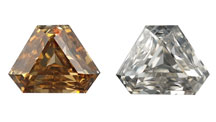
GIA's Commitment to Research
Research not only deepens the world’s understanding of gems, but also protects those who buy or sell them.
Instrumentation
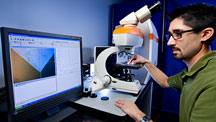
Scientific Instruments Help Researchers Tell Gem Stories
Researchers use powerful analytical tools to determine the distinctive characteristics of natural, synthetic and treated gem materials.
Learn MoreGIA Gem Project

Dr. Edward J. Gubelin Gem Collection
GIA has studied more than 400 important gemstones in the Edward J. Gubelin Collection and is committed to sharing this repository of gemological information.
Go To IndexRecent Research
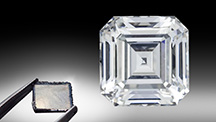
Sally Eaton-Magaña, Matthew F. Hardman, and Shoko Odake Aug 2, 2024
Laboratory-Grown Diamonds: An Update on Identification and Products Evaluated at GIA
Read Article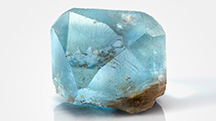
Roy Bassoo, Diane Eames, Matthew F. Hardman, Kenneth Befus, and Ziyin Sun Jan 26, 2024
Topaz from Mason County, Texas
Read Article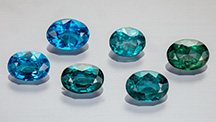
Michael Jollands, Abadie Ludlam, Aaron C. Palke, Wim Vertriest, Shiyun Jin, Pamela Cevallos, Sarah Arden, Elina Myagkaya, Ulrika D’Haenens-Johannson, Vararut Weeramongkhonlert, and Ziyin Sun Aug 4, 2023
Color Modification of Spinel by Nickel Diffusion: A New Treatment
Read Article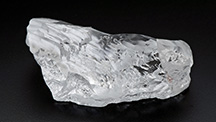
Evan M. Smith, Karen V. Smit, and Steven B. Shirey Nov 11, 2022
Methods and Challenges of Establishing the Geographic Origin of Diamonds
Read Article
Nicholas Sturman, Kwanreun Lawanwong, Nuttapol Kitdee, and Devchand Chodhry Jan 22, 2021
Vietnam: Shell Nuclei, Pearl Hatcheries, and Pearl Farming
Read Article

-Soonthorntantikul.jpg-120.jpg)














